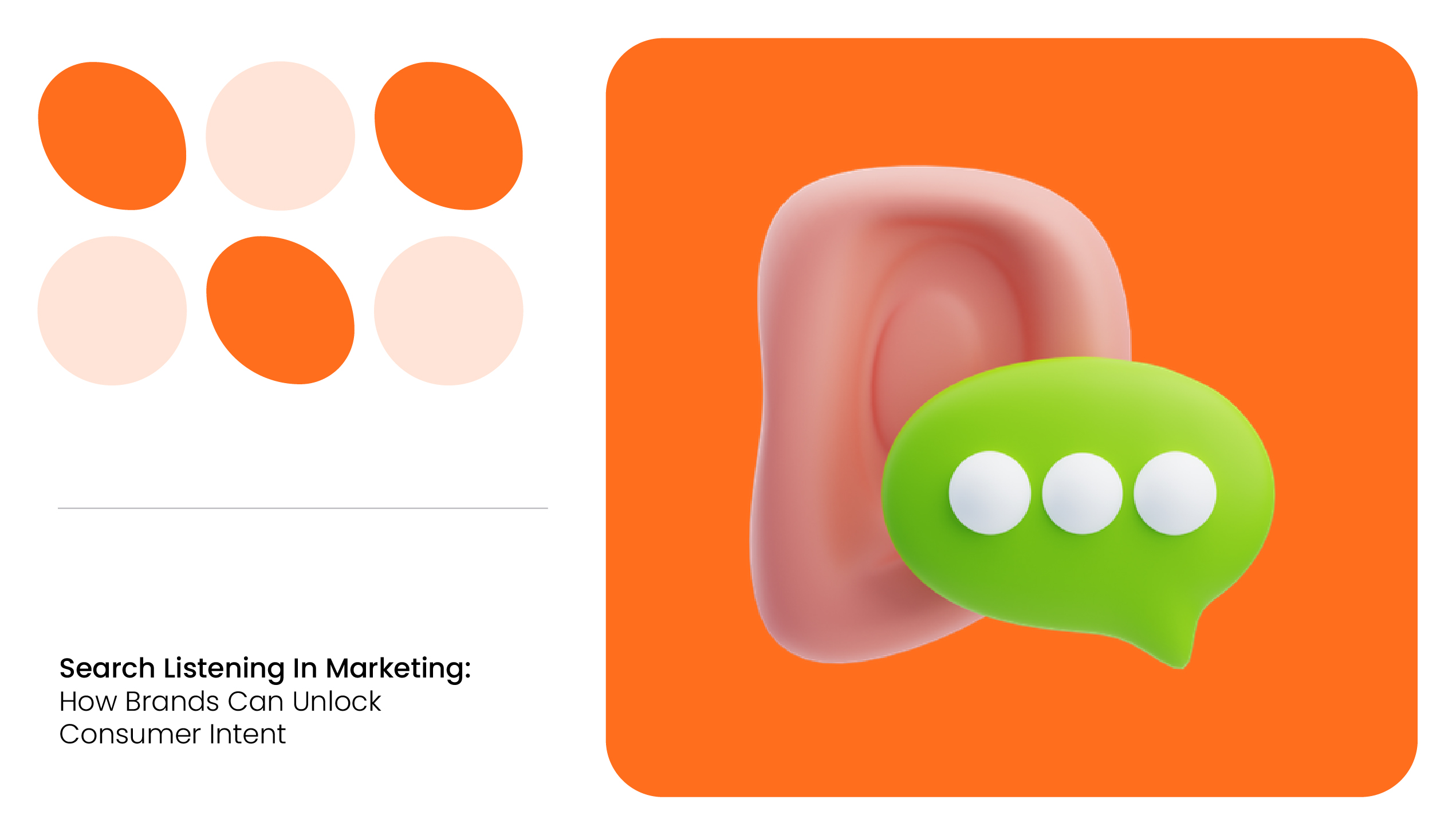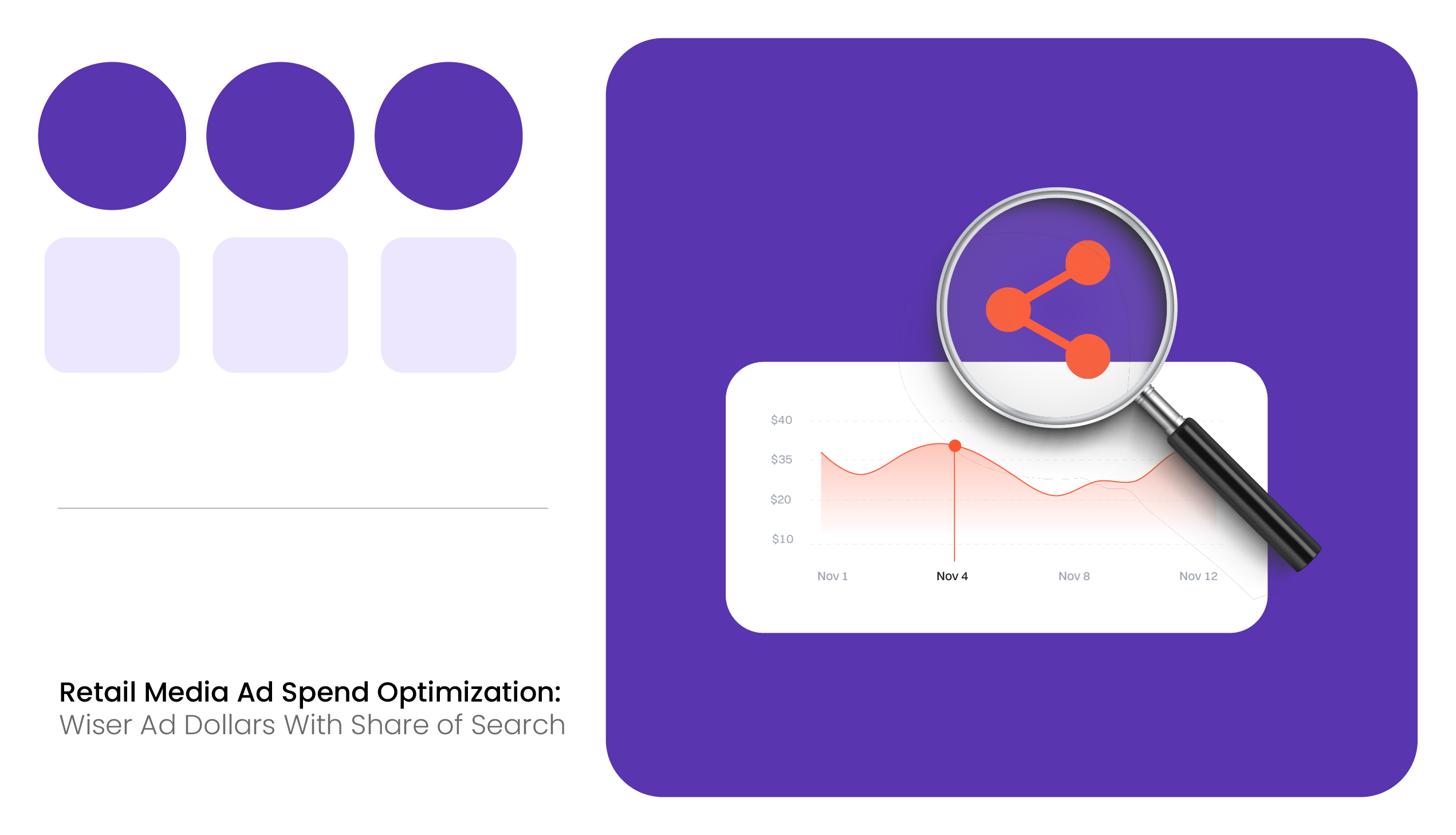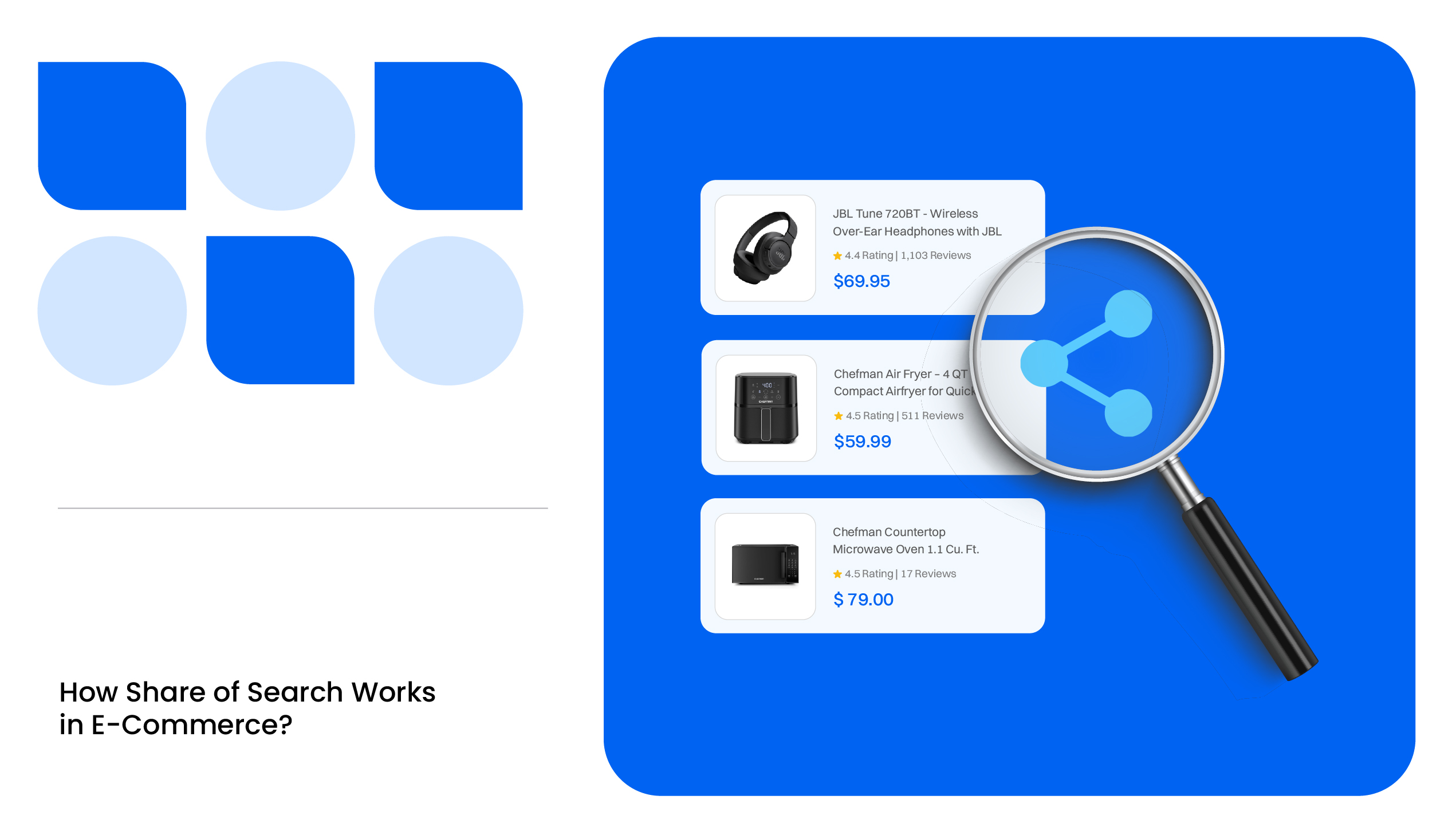If only you could read your customers’ minds, right? While psychic powers in e-commerce sound great, we’ve got to be practical! So, there’s a very close alternative to decode the psyche of customers: search listening.
In this article, we’ll break down everything you need to know: what is search listening, how brands can use it to uncover consumer intent, identify emerging trends, optimize content, and make smarter product and marketing decisions. Not just the fundamentals, but also its advanced applications in the age of AI.
What Is Search Listening?
Search listening is the process of monitoring, collecting, and analyzing the search queries that consumers enter on search engines, e-commerce platforms, and websites.
Unlike social listening, which relies on public conversations and expressed opinions, search listening taps into the private behaviors of users; what they actively seek, explore, and evaluate online. This provides a window into consumer intent that is often more accurate and actionable than any survey or social media mention.
For example, a beauty brand might notice a surge in searches for “cruelty-free makeup for sensitive skin.” This indicates a clear consumer need, which can then inform content creation, product innovation, and even ad targeting.
Similarly, an electronics company might detect rising interest in “wireless earbuds with noise cancellation under $100,” signaling both a product opportunity and a pricing insight.
By tracking these queries, brands can identify emerging trends, track share of search, seasonal shifts, and regional preferences, allowing them to make more informed decisions.
It’s a method that transforms search behavior into actionable intelligence, making marketing with search listening an essential component, especially for brand communications and PR.
Why Is Search Listening Important for Brands?
Brands that adopt search listening in marketing strategies gain a competitive advantage by understanding their audience more deeply. Key benefits include:
- Uncovering consumer needs: Identify questions, pain points, and product preferences that are otherwise hidden.
- Optimizing marketing efforts: Align content, SEO, PPC, and social campaigns with real user intent.
- Forecasting trends early: Spot emerging products, seasonal spikes, and rising categories before competitors.
- Enhancing product strategy: Make data-driven decisions about product launches, features, and assortments.
- Improving ROI: Focus marketing spend on campaigns and content that convert, instead of chasing generic traffic.

Search Listening vs Social Listening
Many marketers mistakenly treat search and social listening in marketing as interchangeable, but they serve different purposes.
- Search Listening: Focuses on intent and questions that users actively search for. Captures hidden interests and emerging needs.
- Social Listening: Focuses on sentiment, opinions, and public brand mentions. Captures how users feel and interact publicly.
Here’s a quick look at the key differences between the two:

When combined, search and social listening in marketing strategy allow brands to see both what consumers want and how they feel, providing insights into consumer pulse along with a holistic view of the market.
With MetricsCart’s Consumer Insights platform for social listening, spot what most brands overlook. Tap into real shopper conversations on YouTube and Reddit to find momentum early, move fast, and ride trends before they peak.
Ways to Use Search Listening in Your Marketing Strategy
Search listening in marketing is the cornerstone of a great customer-centric brand strategy. Here are a few ways you can use it to solidify your action plan:
1. Understanding Consumer Intent
The foundation of any effective marketing strategy is understanding why consumers search for something. Not all searches are created equal, and identifying the type of query helps brands map the customer journey.
Search listening helps identify and classify searches by their intent. For example:
- Informational: “What is the best eco-friendly detergent?” (Consumer is researching or seeking knowledge)
- Navigational: “Patagonia official store” (Consumer is looking for a specific brand or site)
- Transactional: “Buy AirPods Pro online” (signals high purchase intent)
By mapping intent, brands can target content and campaigns to specific stages of the customer journey.
2. Strengthening Content Strategy
Search listening informs content creation by showing the exact questions and topics consumers are actively seeking and care about. This knowledge can shape content strategy in multiple ways:
- Blog posts answering trending queries
- FAQ pages addressing recurring concerns
- Landing pages optimized for high-intent search terms
The result is content that is not just relevant but also aligned with real user intent, increasing the chances of engagement, shares, and conversion. When content is informed by search behavior, it resonates more authentically with the audience, making campaigns more effective and driving measurable results.
3. Optimizing SEO and Paid Search Campaigns
High-value search queries identified through search listening are critical for both SEO and paid advertising. Organic rankings improve when content matches the search terms users are typing, and paid campaigns become more efficient when ads target high-intent keywords.
Marketing with search listening helps reduce wasted retail media ad spend by ensuring campaigns are aligned with actual demand, rather than assumptions. By reflecting real user behavior, Retail Media Network (RMN) strategies become more precise, resulting in higher click-through rates, better quality scores, and increased conversions.
READ MORE | You can shape consumer behavior with RMNs! Check out Reshaping Consumer Behavior with Retail Media Networks: What Brands Must Know.
4. Enhancing Product Development and Launch Marketing
Search listening can also guide product strategy. Emerging queries can highlight product gaps or demand shifts. Brands can use these insights to:
- Introduce new SKUs aligned with consumer needs
- Adjust features or bundles based on trending searches
- Forecast demand for inventory planning
For instance, if there’s a growing volume of searches for “eco-friendly reusable water bottles with filters,” a brand can consider launching a product to meet that demand. Insights from search data can inform SKU decisions and product launch marketing plans, ensuring that they are aligned with real customer needs.
5. Monitoring Competitors
Understanding how your competitors are performing in search can be as valuable as understanding your own brand’s performance.
Search listening helps brands analyze competitors’ visibility and performance:
- Identify queries competitors are ranking for
- Understand gaps in your own coverage
- Inform share of search metrics to track relative brand presence
These insights inform strategic decisions about content, campaigns, and product offerings, allowing brands to close gaps and strengthen their market position.
6. Real-Time Trend Detection
Consumer behavior and search patterns can shift quickly, especially in categories like fashion, beauty, and healthcare. With search listening, brands can:
- Spot seasonal or regional spikes
- React quickly to trending searches
- Launch timely campaigns that resonate with current demand
For example, if a sudden rise in searches for “hydrating face masks” occurs during a heatwave, beauty brands can capitalize by promoting relevant products immediately.
This agility ensures campaigns are timely, relevant, and connected to actual consumer interest, which is critical for driving engagement and maximizing sales opportunities.
7. Integrating With Social Listening
Search and social listening in marketing strategy is an effective combination. While search listening uncovers intent and what users are actively looking for, social listening provides insight into customer sentiment, opinions, and brand perception.
Together, they give a 360° view of the market. By integrating both, brands can ensure campaigns, content, and product decisions are informed by what consumers want, how they feel, and how they interact publicly.
MetricsCart’s ratings and reviews monitoring offers thematic and sub-thematic analysis that gives deep insights into review content to uncover key trends, sentiment, common pain points, and emerging opportunities for smarter marketing and product R&D strategies.
Search Listening in The Age of AI
According to The State of Ecommerce (2025) report, AI has gone from hype to habit, with 58% of surveyed consumers comfortable using Gen AI for shopping.
Artificial intelligence has transformed the way consumers search online, especially Gen Z and millennials. Voice search, conversational AI, and predictive algorithms have shifted search behavior toward natural language queries, producing richer, more nuanced data. Today, people ask complete questions, rather than typing isolated keywords.
For example, instead of typing “vegan shampoo,” users may ask, “Which vegan shampoo is best for oily hair and sensitive scalp?” This shift in search provides brands with richer, more nuanced insights into what their audience truly needs.

In episode 31 of the Digital Shelf Insider podcast, E-Commerce Sales Leader, Marc Hubbard, discusses this interesting search shift and how brands can win amidst the changing rules of product discoverability and the rise of retail media.
Tune into the full episode here:
Why Brands Need to Pay Attention to Searches More Than Ever
There are billions of product searches every day, and that means billions of different user intents. Consumers don’t just browse; they actively search for answers, solutions, and products that meet their specific needs.
Every search query carries intent, revealing exactly what a customer is looking for, when they are looking for it, and how ready they are to make a purchase.
Understanding what is search listening has never been more critical. From detecting emerging trends to spotting product gaps, search data provides actionable insights that traditional marketing analytics often miss.
With e-commerce platforms, marketplaces, search engines, and now even Gen AI crowded with competitors, brands that ignore search behavior risk being invisible at the very moment a customer is ready to engage.
Don’t let your brand be invisible when consumers are searching. With MetricsCart’s search monitoring solution, capture real-time search trends, understand consumer intent, brand search visibility, and ensure your products stay discoverable. Get in touch with MetricsCart and turn insights into actionable strategies that drive growth.
Ready to Turn Search Insights into Actionable Growth?
FAQs
Search listening is the practice of analyzing search queries to understand consumer intent, trends, and preferences.
Track relevant search queries, map consumer intent, and apply insights to optimize content, campaigns, SEO, and product strategy.
No. Social listening tracks public opinions and sentiment, while search listening focuses on what users actively search for online.
Share of search measures how often your brand appears in relevant searches compared to competitors, indicating visibility and market presence.
Yes. It uncovers hidden consumer needs, emerging trends, and opportunities for marketing, product development, and strategic brand decisions.






